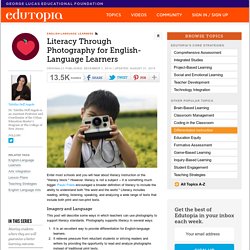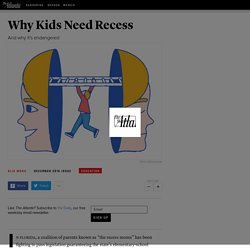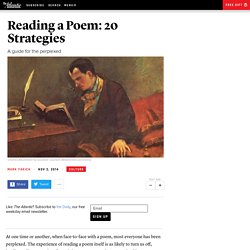

22 Powerful Closure Activities. 31 Things Your Kids Should Be Doing Instead of Homework. There are many aspects of my more than decade-long career as a teacher that I’m proud of.

My reputation for giving lots and lots of homework is not one of them. For most of my teaching career, I taught fifth or sixth grade. Sometimes I gave more than two hours of homework. Kids complained a lot, though parents rarely did, at least not to my face. I think parents mostly felt the same way I did: that homework was the best way to practice new skills, that it teaches responsibility and helps to develop a strong work ethic, and that it’s an opportunity to reflect on new learning. Literacy Through Photography for English-Language Learners. Enter most schools and you will hear about literacy instruction or the "literacy block.

" However, literacy is not a subject -- it is something much bigger. Paulo Freire encouraged a broader definition of literacy to include the ability to understand both "the word and the world. " Literacy includes reading, writing, listening, speaking, and analyzing a wide range of texts that include both print and non-print texts. Imagery and Language This post will describe some ways in which teachers can use photography to support literacy standards. It is an excellent way to provide differentiation for English-language learners.It relieves pressure from reluctant students or striving readers and writers by providing the opportunity to read and analyze photographs instead of traditional print texts.It represents a culturally responsive teaching method as it demonstrates a way to welcome all voices in the classroom to be heard and valued.
Why Kids Need Recess. In Florida, a coalition of parents known as “the recess moms” has been fighting to pass legislation guaranteeing the state’s elementary-school students at least 20 minutes of daily free play.

Similar legislation recently passed in New Jersey, only to be vetoed by the governor, who deemed it “stupid.” When, you might ask, did recess become such a radical proposal? In a survey of school-district administrators, roughly a third said their districts had reduced outdoor play in the early 2000s. Likely culprits include concerns about bullying and the No Child Left Behind Act, whose time-consuming requirements resulted in cuts to play. [1] Disadvantaged kids have been the most likely to be shortchanged: According to a 2003 study, just 56 percent of children living at or below the poverty line had recess, compared with 83 percent of those above the poverty line; a similar disparity was noted between black children and their white peers. [2] The Studies:
Reading a Poem: 20 Strategies. At one time or another, when face-to-face with a poem, most everyone has been perplexed.

The experience of reading a poem itself is as likely to turn us off, intellectually or emotionally, as it is to move us. Unless patronized by celebrities, set to music, accompanied by visuals, or penned by our own children, poems do a terrible job of marketing themselves. All those ragged lines and affected white spaces make them appear as though they should be treated only as pieces of solemn art. Look but don’t get too close, and definitely don’t touch. But what if the fine art of reading poetry isn’t so fine after all? Here are 20 modest proposals toward rethinking the act of reading a poem. 1. 2. 3. 4. 5. 6. Build Reading Stamina With Your Struggling Learners. Editor’s note: We LOVE this idea from Lisa King, a middle-school teacher in North Richland Hills, Texas.

Students gain a deep understanding of the text while practicing six key reading skills and building reading stamina. My students struggle with maintaining focus while they are reading and with key reading skills. The Big Picture Program Focuses on Real-World Skills and Projects to Help Teenagers Who Struggle in Traditional Classrooms. This story is part of a short series on innovative ways teachers are rethinking the traditional lesson plan.

What’s one that resonated with you or the student in your life? Tell us about it: hello@theatlantic.com. Nothing in particular stands out about the two adjoining rooms at South Burlington High School, one littered with desks, the other lined with simple grey cubicles. Yet the 30 students working inside are taking part in a uniquely personalized curriculum unlike anything their peers—or most U.S. high-school students—ever get to experience. Big Picture, a program with a chapter at South Burlington, bucks the traditional model of high-school learning. That’s because the program is centered around the concept and execution of self-directed learning. Big Picture’s model is now used in more than 60 schools across the U.S. When Finland's Teachers Work in America’s Schools. “I have been very tired—more tired and confused than I have ever been in my life,” Kristiina Chartouni, a veteran Finnish educator who began teaching American high-school students this autumn, said in an email.

“I am supposedly doing what I love, but I don't recognize this profession as the one that I fell in love with in Finland.” Chartouni, who is a Canadian citizen through marriage, moved from Finland to Florida with her family in 2014, due in part to her husband’s employment situation. After struggling to maintain an income and ultimately dropping out of an ESL teacher-training program, a school in Tennessee contacted her this past spring about a job opening. Shortly thereafter, Chartouni had the equivalent of a full-time teaching load as a foreign-language teacher at two public high schools in the Volunteer State, and her Finnish-Canadian family moved again.